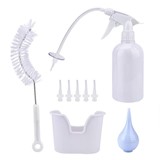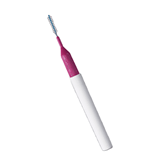Infection control is of utmost importance in dental practices to ensure the safety of both patients and dental professionals. Ultrasonic cleaning, particularly with dental ultrasonic cleaners in Brisbane, plays a vital role in maintaining a high level of infection control by effectively removing contaminants from dental instruments. In this article, we will explore how ultrasonic cleaning enhances dental infection control and the benefits it offers to dental practices.
1. Thorough Cleaning
Ultrasonic cleaning is highly effective in removing various types of contaminants from dental instruments. The ultrasonic waves create microscopic bubbles in the cleaning solution, a process known as cavitation. These bubbles implode near the surfaces of the instruments, generating powerful shock waves that dislodge debris, bacteria, and other contaminants. This process reaches even the smallest crevices and hard-to-reach areas that manual cleaning may not adequately address. As a result, dental instruments are thoroughly cleaned, minimizing the risk of cross-contamination and ensuring a safe clinical environment.


Find the right Dental Ultrasonic Cleaner
Compare quotes from expert Australian suppliers and make the best choice. It's free, quick and easy!
2. Removal of Biofilms
Biofilms are complex microbial communities that can form on dental instruments, particularly in areas that are difficult to access. These biofilms pose a significant challenge for infection control as they can harbor pathogenic microorganisms and resist traditional cleaning methods. Ultrasonic cleaning has the ability to disrupt and remove biofilms, effectively eliminating the potential for biofilm-associated infections. By incorporating ultrasonic cleaning into the instrument reprocessing workflow, dental practices can significantly enhance their infection control protocols.
3. Time and Labor Efficiency
Ultrasonic cleaning offers time and labor efficiency benefits to dental practices. Compared to manual cleaning, which can be time-consuming and labor-intensive, ultrasonic cleaning reduces the effort required to clean dental instruments effectively. Once the instruments are placed in the dental ultrasonic cleaner and the cleaning cycle is initiated, the ultrasonic waves do the work, allowing dental professionals to focus on other essential tasks. This time-saving aspect improves workflow efficiency and ensures that instruments can be reprocessed promptly, contributing to smooth patient flow within the practice.
4. Preservation of Instrument Quality
Proper cleaning and maintenance are essential for preserving the quality and lifespan of dental instruments. Ultrasonic cleaning provides a gentle yet thorough cleaning process that minimizes the risk of damage to delicate instruments. Unlike more aggressive cleaning methods, such as manual scrubbing or harsh chemical exposure, ultrasonic cleaning effectively removes contaminants without compromising the integrity of the instruments. By preserving instrument quality, dental practices can minimize the need for premature instrument replacement, resulting in long-term cost savings.


Find the right Dental Ultrasonic Cleaner
Compare quotes from expert Australian suppliers and make the best choice. It's free, quick and easy!
5. Compliance with Standards and Guidelines
Dental practices must comply with various standards and guidelines related to infection control, such as those set forth by regulatory bodies and professional associations. Ultrasonic cleaning is recognized as a recommended practice in instrument reprocessing protocols due to its effectiveness in removing contaminants. By incorporating ultrasonic cleaning into their infection control procedures, dental practices can ensure compliance with the relevant standards and guidelines, providing reassurance to patients and regulatory agencies.
Explanation Of How Ultrasonic Cleaners Work To Remove Debris And Bacteria From Dental Instruments
Dental ultrasonic cleaners utilize the power of ultrasonic waves to remove debris and bacteria from dental instruments. The process involves several key mechanisms that work together to achieve effective cleaning.
- Cavitation: The primary cleaning action of an ultrasonic cleaner is based on a phenomenon called cavitation. Cavitation occurs when high-frequency sound waves (ultrasonic waves) are transmitted into a liquid cleaning solution, creating alternating high and low-pressure waves. During the low-pressure phase, small bubbles or cavities form in the liquid. As the pressure rapidly increases during the high-pressure phase, these bubbles collapse or implode, generating tiny but powerful shockwaves.
- Implosion Effect: The implosion of these microscopic bubbles creates intense localized pressure and temperature differentials, releasing high-energy shockwaves. These shockwaves create a scrubbing action on the surfaces of the dental instruments, dislodging and removing debris, dirt, bacteria, and other contaminants adhered to the instruments.
- Microagitation: The implosion of the bubbles also produces microagitation in the cleaning solution. This micro agitation creates tiny, high-velocity liquid jets that reach into intricate or hard-to-reach areas of the instruments, such as hinges, joints, and crevices. The combination of the microagitation and shockwaves helps dislodge and remove even the smallest particles and contaminants from the instruments' surfaces.
- Cleaning Solution: The cleaning solution used in the ultrasonic cleaner plays a vital role in the cleaning process. It acts as a medium for transmitting the ultrasonic waves and assists in the removal of debris and bacteria. The cleaning solution typically consists of a mixture of water and a specialized cleaning agent or detergent. The detergent helps to break down and emulsify oils, grease, and other organic substances, making them easier to remove during the cleaning process.
- Temperature Control: Some ultrasonic cleaners also have heating elements to control the temperature of the cleaning solution. Heating the solution can enhance the cleaning process by increasing the chemical reactions and reducing the viscosity of the solution, allowing it to penetrate into tight spaces more effectively. However, it's important to follow the manufacturer's guidelines and avoid excessive temperatures that may damage delicate instruments.
Benefits of Ultrasonic Cleaning in Terms of Infection Control and Patient Safety
Maintaining a high level of infection control is paramount in healthcare settings to protect patients and healthcare professionals. Ultrasonic cleaning has proven to be an invaluable tool in achieving optimal infection control and enhancing patient safety. In this article, we will explore the benefits of ultrasonic cleaning specifically in terms of infection control and patient safety.
1. Thorough Removal of Contaminants
Ultrasonic cleaning utilizes high-frequency sound waves to create microscopic bubbles in a cleaning solution. These bubbles undergo a process called cavitation, where they implode near the surfaces of objects being cleaned. This implosion generates powerful shock waves that effectively dislodge and remove contaminants, including bacteria, viruses, fungi, and other microorganisms. The thorough removal of these contaminants significantly reduces the risk of cross-contamination and the spread of infections, promoting a safer healthcare environment for patients.
2. Effective Cleaning of Complex and Delicate Items
Healthcare facilities deal with a wide range of instruments and equipment that can be complex in design and delicate in nature. Ultrasonic cleaning is particularly beneficial for these items, as it can reach intricate surfaces, small crevices, and hard-to-reach areas that manual cleaning methods may struggle to access. The gentle yet powerful cleaning action of ultrasonic waves ensures that even the most intricate instruments are thoroughly cleaned, eliminating potential reservoirs for microorganisms and minimizing the risk of contamination.
3. Elimination of Biofilms
Biofilms, which are communities of microorganisms that adhere to surfaces and form a protective matrix, pose a significant challenge in infection control. Biofilms are highly resistant to traditional cleaning methods and can serve as a source of persistent infection. Ultrasonic cleaning has the capability to disrupt and remove biofilms effectively, preventing their reformation and reducing the risk of biofilm-associated infections. By incorporating ultrasonic cleaning into infection control protocols, healthcare facilities can enhance patient safety and reduce the incidence of healthcare-associated infections.
4. Time and Labor Efficiency
In addition to its effectiveness in cleaning, ultrasonic cleaning offers time and labor efficiency benefits. Compared to manual cleaning methods, which can be time-consuming and labor-intensive, ultrasonic cleaning requires minimal effort from healthcare professionals. Once the items are placed in the ultrasonic cleaner and the cleaning cycle is initiated, the ultrasonic waves perform the cleaning process while healthcare professionals can focus on other important tasks. This time-saving aspect improves workflow efficiency, allowing for more efficient patient care and reducing the risk of human error during the cleaning process.
5. Enhanced Instrument Longevity
Regular and thorough cleaning is essential for maintaining the longevity and functionality of healthcare instruments and equipment. Manual cleaning methods can be harsh and abrasive, leading to premature wear and damage. Ultrasonic cleaning, on the other hand, provides a gentle yet effective cleaning process that minimizes the risk of damage to delicate instruments. By preserving the quality and extending the lifespan of healthcare instruments, ultrasonic cleaning contributes to cost savings for healthcare facilities in the long run.
6. Compliance with Standards and Guidelines
Adhering to infection control standards and guidelines is essential for healthcare facilities to ensure patient safety and regulatory compliance. Ultrasonic cleaning is recognized as a recommended practice in many infection control protocols and guidelines. By incorporating ultrasonic cleaning into their cleaning and disinfection processes, healthcare facilities demonstrate their commitment to maintaining a safe and hygienic environment for patients and staff. Compliance with standards and guidelines not only promotes patient safety but also provides assurance to regulatory bodies and accreditation agencies.
Advantages of Using Ultrasonic Cleaning in Conjunction with Sterilization Techniques
Sterilization is a critical process in healthcare settings to ensure the elimination of all microorganisms and prevent the transmission of infections. When combined with appropriate sterilization techniques, ultrasonic cleaning offers several advantages that enhance the overall effectiveness of the sterilization process. In this article, we will discuss the advantages of using ultrasonic cleaning in conjunction with sterilization techniques.
1. Enhanced Cleaning Efficiency
Ultrasonic cleaning utilizes high-frequency sound waves to create microscopic bubbles in a cleaning solution, which undergo a process called cavitation. This phenomenon generates powerful shock waves that effectively dislodge and remove contaminants from the surfaces of instruments and equipment. By incorporating ultrasonic cleaning before sterilization, the thorough removal of contaminants significantly enhances the cleaning efficiency, ensuring that the sterilization process can effectively target the remaining microorganisms.
2. Removal of Difficult-to-Reach Contaminants
Instruments and equipment used in healthcare settings often have intricate designs and hard-to-reach areas where contaminants can hide. Manual cleaning methods may struggle to effectively clean these areas, increasing the risk of incomplete sterilization. Ultrasonic cleaning, with its ability to reach even the most complex surfaces and small crevices, can effectively remove contaminants from these difficult-to-reach areas. By combining ultrasonic cleaning with sterilization techniques, healthcare facilities can ensure a more comprehensive removal of contaminants, reducing the likelihood of residual microorganisms.
3. Reduction of Biofilm Formation
Biofilms, which are communities of microorganisms encased in a protective matrix, pose a challenge in sterilization processes. These biofilms are highly resistant to traditional sterilization methods and can serve as a source of persistent infection. Ultrasonic cleaning has the capability to disrupt and remove biofilms effectively, preventing their reformation and reducing the risk of biofilm-associated infections. By incorporating ultrasonic cleaning before sterilization, healthcare facilities can enhance the efficacy of the sterilization process and minimize the chances of biofilm-related complications.
4. Preservation of Sterilization Equipment
Sterilization equipment, such as autoclaves, can be susceptible to buildup from contaminants and mineral deposits over time. These deposits can compromise the performance and effectiveness of the sterilization process. Ultrasonic cleaning can be utilized to clean and descale sterilization equipment, ensuring their optimal functioning. By maintaining the cleanliness and functionality of sterilization equipment through ultrasonic cleaning, healthcare facilities can prolong the lifespan of the equipment, reduce the risk of breakdowns, and ensure consistent and reliable sterilization results.
5. Time and Labor Efficiency
Ultrasonic cleaning offers time and labor efficiency benefits when used in conjunction with sterilization techniques. The ultrasonic cleaning process requires minimal effort from healthcare professionals, as the cleaning action is performed by the ultrasonic waves. This allows healthcare professionals to focus on other essential tasks while instruments and equipment undergo thorough cleaning. The time-saving aspect of ultrasonic cleaning enhances workflow efficiency, enabling healthcare facilities to process a larger volume of instruments and equipment within a shorter timeframe.
6. Assurance of Patient Safety
The combination of ultrasonic cleaning and sterilization techniques provides an added layer of assurance regarding patient safety. By employing a comprehensive cleaning process that includes ultrasonic cleaning, healthcare facilities can minimize the risk of residual contaminants on instruments and equipment. This, in turn, reduces the potential for healthcare-associated infections, ensuring the safety and well-being of patients.
Examples of Dental Instruments That Can Benefit from Ultrasonic Cleaning
Ultrasonic cleaning is a highly effective method for cleaning and maintaining dental instruments, ensuring their optimal performance and prolonging their lifespan. While it can benefit a wide range of dental instruments, certain instruments, in particular, can greatly benefit from ultrasonic cleaning due to their intricate designs and hard-to-reach areas. In this article, we will explore examples of dental instruments that can benefit from ultrasonic cleaning.
1. Handpieces and Rotary Instruments
Handpieces and rotary instruments, such as dental drills, burs, and endodontic files, are essential tools in dental procedures. They often have complex designs with small crevices and intricate surfaces that can accumulate debris and contaminants. Ultrasonic cleaning is highly effective in removing these contaminants from handpieces and rotary instruments, ensuring their optimal functionality and preventing cross-contamination. The thorough cleaning action of ultrasonic waves reaches even the smallest areas, ensuring that these instruments are thoroughly cleaned and ready for use.
2. Scalers and Curettes
Dental scalers and curettes are commonly used for scaling and root planing procedures to remove plaque and calculus from teeth and root surfaces. These instruments have fine tips and delicate edges that require careful cleaning. Ultrasonic cleaning is particularly beneficial for scalers and curettes as it can effectively remove debris and stains from the instrument surfaces, including areas that are challenging to access manually. By utilizing ultrasonic cleaning, these instruments can be maintained in optimal condition, ensuring efficient and effective patient treatment.
3. Orthodontic Instruments
Orthodontic instruments, such as pliers, cutters, and tweezers, are utilized in orthodontic procedures to adjust and manipulate dental appliances. These instruments often have intricate designs with hinges, joints, and delicate components that can accumulate debris and become challenging to clean thoroughly. Ultrasonic cleaning offers a solution for effectively cleaning orthodontic instruments by reaching all the nooks and crannies, ensuring that they are free from contaminants and functioning optimally.
4. Implant Instruments
Implant instruments, including drivers, drills, and abutment wrenches, are critical in implant dentistry. These instruments come into direct contact with the implant surfaces and require meticulous cleaning to ensure their sterility and integrity. Ultrasonic cleaning provides a thorough and efficient cleaning process for implant instruments, effectively removing debris, biofilms, and bacteria from their surfaces. The gentle yet powerful cleaning action of ultrasonic waves ensures that the intricate components of implant instruments are thoroughly cleaned, reducing the risk of implant-related complications.
5. Prosthodontic Instruments
Prosthodontic instruments, such as impression trays, denture brushes, and laboratory tools, are used in the fabrication and maintenance of dental prostheses. These instruments often have irregular surfaces, hard-to-reach areas, and residual material build-up that can impact their functionality and cleanliness. Ultrasonic cleaning is highly beneficial for prosthodontic instruments as it can remove residual materials, debris, and contaminants from their surfaces, ensuring their cleanliness and prolonging their lifespan.
6. Endodontic Instruments
Endodontic instruments, such as files, reamers, and broaches, are used in root canal treatments to clean and shape the root canals. These instruments can become easily contaminated with debris, organic matter, and microorganisms during the treatment process. Ultrasonic cleaning provides a highly effective method for removing these contaminants from endodontic instruments. The cavitation process of ultrasonic cleaning reaches deep into the intricate surfaces of the instruments, ensuring their thorough cleaning and reducing the risk of post-treatment infections.
In conclusion, ultrasonic cleaning plays a crucial role in enhancing dental infection control by effectively removing contaminants from dental instruments. The benefits of ultrasonic cleaning include thorough cleaning that reaches even the smallest crevices and hard-to-reach areas, the removal of biofilms that resist traditional cleaning methods, time and labor efficiency, preservation of instrument quality, and compliance with infection control standards and guidelines. By incorporating ultrasonic cleaning into dental practices, healthcare professionals can ensure a safe clinical environment, minimize the risk of cross-contamination, and enhance patient safety. Furthermore, when used in conjunction with sterilization techniques, ultrasonic cleaning offers enhanced cleaning efficiency, removal of difficult-to-reach contaminants, reduction of biofilm formation, preservation of sterilization equipment, time and labor efficiency, and an additional layer of assurance regarding patient safety. The wide range of dental instruments that can benefit from ultrasonic cleaning includes handpieces, scalers, orthodontic instruments, implant instruments, prosthodontic instruments, and endodontic instruments. By utilizing ultrasonic cleaning, dental practices can maintain optimal instrument performance, prolong instrument lifespan, and ensure efficient and effective patient treatment. Overall, ultrasonic cleaning is a valuable tool in enhancing dental infection control and promoting the highest standards of patient care in dental practices.
















